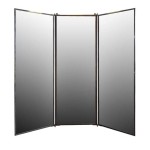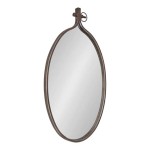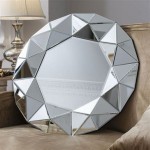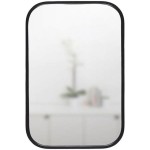Best Ways to Mirror iPhone to Laptop
Mirroring an iPhone's screen to a laptop offers significant advantages for various tasks, from presenting slideshows and demonstrations to enjoying media content on a larger display. Several effective methods facilitate this screen mirroring, each with its own strengths and weaknesses. Choosing the optimal method depends on the specific needs and available resources.
Using a USB Cable and QuickTime Player (Mac)
For Mac users, connecting the iPhone directly to the laptop via a USB cable and utilizing QuickTime Player provides a reliable and straightforward mirroring solution. This method offers minimal latency, making it ideal for tasks requiring real-time responsiveness, such as gaming or interactive presentations. To initiate the mirroring process, users must connect their iPhone to their Mac using a Lightning-to-USB cable. Upon opening QuickTime Player, selecting "New Movie Recording" from the File menu, and choosing the iPhone as the camera and microphone input source, the iPhone's display will be mirrored on the Mac's screen.
Leveraging AirPlay with Apple TV (Mac and Windows)
AirPlay, Apple's proprietary wireless streaming technology, allows users to mirror their iPhone's screen to an Apple TV, which can then be displayed on a laptop connected to the same network as the Apple TV. While this method introduces some latency compared to the wired QuickTime approach, it offers greater flexibility and mobility. Users can initiate AirPlay mirroring from the Control Center on their iPhone, selecting the Apple TV as the output device. The laptop connected to the same network as the Apple TV can then display the mirrored content through the Apple TV app or by mirroring the Apple TV's display.
Employing Third-Party Screen Mirroring Applications (Mac and Windows)
Several third-party applications offer screen mirroring functionality for both Mac and Windows users. These applications typically utilize Wi-Fi to establish a connection between the iPhone and the laptop. Some popular choices include Reflector, LonelyScreen, and AirServer. These applications often offer additional features beyond basic screen mirroring, such as recording the mirrored display or streaming to multiple devices simultaneously. However, users should be aware that the performance of these applications can vary depending on network conditions and the specific software chosen.
Utilizing the Built-in Project Feature in Windows 10 and 11
Windows 10 and 11 offer a built-in "Project" feature that facilitates wireless screen mirroring from various devices, including iPhones. This feature relies on the Miracast standard, which allows for wireless display connections. To utilize this feature, users must ensure that both their iPhone and Windows laptop support Miracast. On the Windows laptop, users can activate the "Project" feature by pressing the Windows key + P and selecting "Connect to a wireless display." On the iPhone, users can initiate screen mirroring from the Control Center, searching for and connecting to their Windows laptop.
Choosing the Right Mirroring Solution for Specific Needs
The optimal method for mirroring an iPhone to a laptop depends on the specific requirements of the task. For scenarios demanding minimal latency, such as gaming or using interactive applications, the wired connection using QuickTime Player on a Mac provides the best performance. When wireless convenience is prioritized, AirPlay with an Apple TV offers a reliable solution, although it introduces some latency. Third-party applications provide additional features and cross-platform compatibility, but performance can be variable. The built-in Windows Project feature offers a native solution for Windows users, but Miracast compatibility must be confirmed.
Factors to Consider When Choosing a Mirroring Method
Several factors influence the choice of mirroring method. Latency requirements, network conditions, operating system compatibility, and the need for additional features like recording or streaming to multiple devices play a significant role. Users should carefully evaluate these factors to select the most suitable mirroring solution for their specific context.
Troubleshooting Common Mirroring Issues
Occasionally, users may encounter issues when attempting to mirror their iPhone to a laptop. Common problems include connection failures, poor performance, and audio sync issues. Checking network connectivity, ensuring software updates on both devices, and restarting devices can often resolve these issues. Consulting online resources and support documentation for the specific mirroring method can also provide helpful troubleshooting guidance.
Ensuring Software and Hardware Compatibility
Maintaining up-to-date software on both the iPhone and the laptop is crucial for optimal mirroring performance and compatibility. Users should verify that their devices meet the minimum system requirements for the chosen mirroring method and ensure that all necessary drivers and software components are installed.
Security Considerations When Mirroring
When mirroring content, especially sensitive information, users should be mindful of the security implications. Ensuring a secure network connection and using trusted mirroring software can mitigate potential risks associated with unauthorized access to displayed data.

How To Mirror Iphone Windows Pc Laptop Mac Full Guide

How To Mirror Your Iphone Screen On A Computer Pcmag

How To Mirror Iphone Windows 10

How To Screen Mirroring Iphone 6 Pc

5 Minutes Screen Mirroring Iphone Ipad To Pc In 2024

How To Mirror Iphone Ipad Laptop

Best Ways To Mirror Iphone Pc Via Usb Without Wifi

How Can You Mirror Iphone To Windows 10 Free With 5kplayer

How To Mirror Iphone Windows Pc Laptop Mac Full Guide

How To Mirror Your Iphone Screen On A Computer Pcmag








